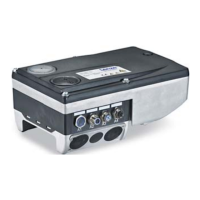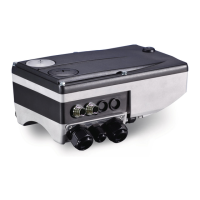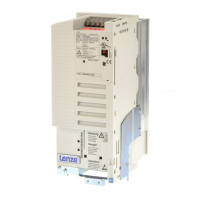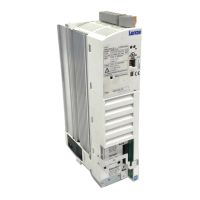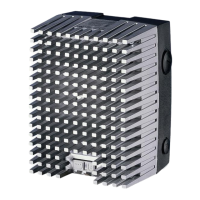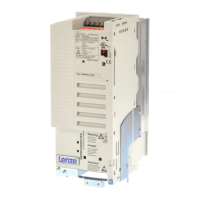5 Motor control (MCTRL)
5.9 Servo control (SC)
238
Lenze · 8400 HighLine · Reference manual · DMS 12.0 EN · 06/2017 · TD23
_ _ _ _ _ _ _ _ _ _ _ _ _ _ _ _ _ _ _ _ _ _ _ _ _ _ _ _ _ _ _ _ _ _ _ _ _ _ _ _ _ _ _ _ _ _ _ _ _ _ _ _ _ _ _ _ _ _ _ _ _ _ _ _
5.9.3 Basic settings
The following "Initial commissioning steps" must be performed to commission the servo control:
Tip!
Information on the optimisation of the control mode and the adaptation to the real
application is provided in chapter "Optimising the control mode
". ( 240)
Parameterisable additional functions are described correspondingly in the chapter
"Parameterisable additional functions
". ( 258)
Initial commissioning steps
1 Determine the motor control:
C00006
= "2: SC: Servo control ASM"
2. Set the motor selection/motor data
• When selecting and parameterising the motor, the motor nameplate data and the equivalent circuit
diagram data are relevant. Detailed information can be found in the "Motor selection/Motor data
"
chapter. ( 135)
Depending on the motor manufacturer, proceed as follows:
Lenze motor:
Selecting a motor from the motor catalogue in the
»Engineer«
- or -
1.Set the motor nameplate data
2.Automatic motor data identification
Third party manufacturer's motor:
1.Set the motor nameplate data
2.Automatic motor data identification
or set known
equivalent circuit diagram data manually:
C00082
: Motor rotor resistance
C00084
: Motor stator resistance
C00085
: Motor stator leakage inductance
C00092
: Motor magnetising inductance
C00095
: Motor magnetising current
3. Define the type of control:
bTorquemodeOn = FALSE: Speed control with torque limitation
bTorquemodeOn = TRUE: Torque control with speed limitation
4. Parameterise the encoder/feedback system. Encoder/feedback system ( 276)
5th Set the slip compensation (C00021
). Slip compensation ( 271)
Note!
• The Lenze settings of the inverter are predefined for a power-adapted standard
asynchronous motor. For an optimal drive behaviour, we recommend to adapt the
controller settings.
• When controlling an asynchronous motor (ASM), magnetisation is carried out prior to
enabling the setpoint after a controller enable in the Lenze setting. The (delayed)
setpoint enabling ensures direct availability of the maximum torque at the motor.
• The delay of the setpoint enabling associated with the magnetisation can be
reduced by reducing the threshold set in C00918
. However, this also reduces the
maximum torque which is directly available after the setpoint enabling.
•If C00918
= "0 %", magnetisation is not carried out.
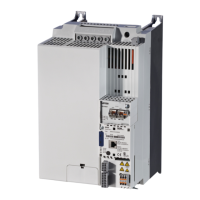
